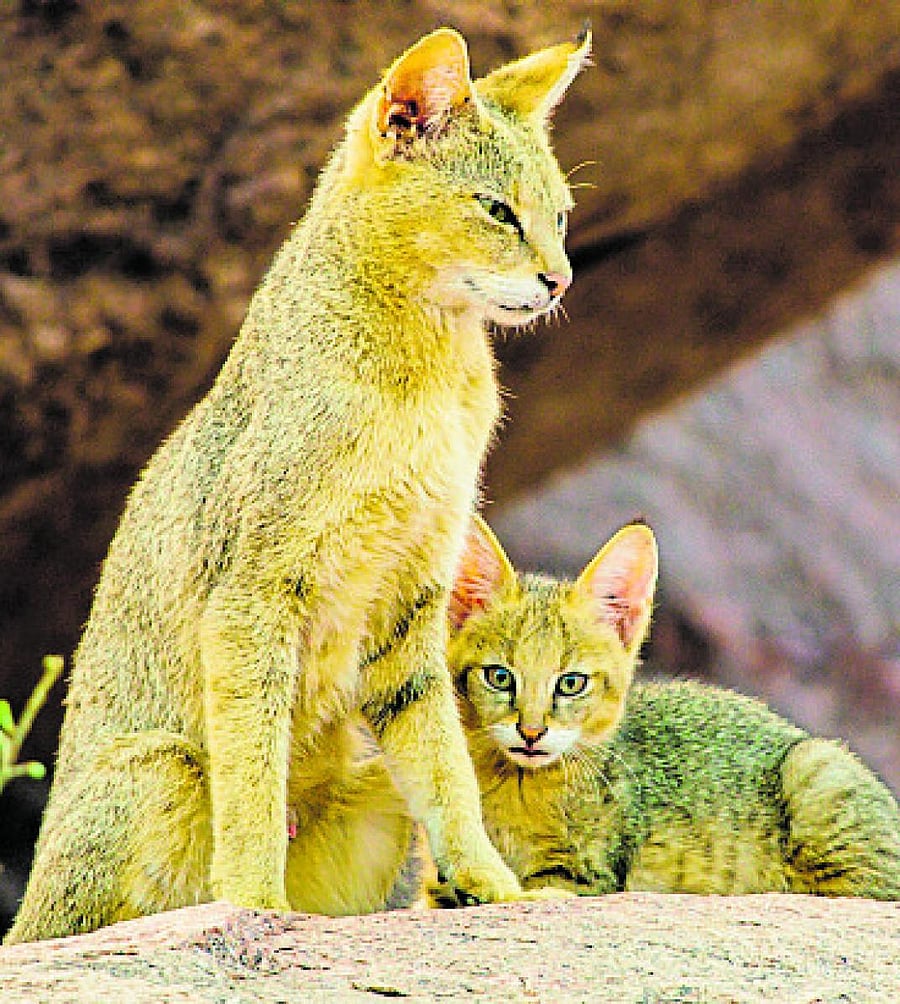“Did you know that India is home to more cats than any other country in the world?” asks Sandesh Kadur (42) a National Geographic Fellow & BAFTA award-winning cameraman. Along with his team at Felis Creations, he has produced a three-part documentary series for National Geographic called —Wild Cats of India, which are premiering right now.
“ The Tiger, Snow Leopard, Leopard and the Lion are powerful, enigmatic and iconic species and these big cats are commonly connected immediately with India.
The big four are archetypal of India’s contrasting landscapes—from the cold mountains of the Himalaya to the dense jungles of the Western Ghats, from the arid regions of Gir to even the sprawling urban cities across the country,” says Kadur.
“But, there are a number of India’s small cats that have lived in the shadow of their larger cousins,” reveals Kadur who is on a quest to unravel the mysteries of the lesser-known felines.
“I have journeyed deep into the realm of the rare clouded leopard (Neofelis nebulosa), have travelled to one of India’s most densely populated regions in search of the elusive fishing cat (Prionailurus viverrinus) and have filmed a family of Jungle cats (Felis chaus) co-existing with a Bengal fox family in Koppal, on the Deccan Plateau.”
Kadur has journeyed to Ladakh in the Himalaya in search of Snow Leopards (Panthera uncia) —the ghost of the mountains. He has then ventured deep into the realm of the smallest of big cats —the clouded leopard in the jungles of northeast India. Through his work, he has documented the rarest of India’s wildcats and explored their relationship with humans.
Jungle cats inhabit wetlands like swamps, agricultural areas with dense vegetation. It is listed as least concern on the IUCN Red List and is mainly threatened by destruction of wetlands, trapping and poisoning. Humans must realise that these cats are so important to keep the ecosystem stable, he says. They feed on rodents and thereby help the farmer keep his crop safe. They occasionally kill a chicken and humans retaliate. In fact, there is a habba (Karuhunnime) when tribals go out to kill many of them. Jungle cats are much larger than the average house cat but are tawny and sand-coloured with sharp pointy ears and long legs with a short tail.
The Pallas’s cat (Otocolobus manul) is about the size of a domestic cat and found in the high Tibetan plateau of the Trans-Himalaya. The combination of its stocky posture and long, dense fur makes it appear stout and plump. Ochre coloured with dark vertical bars on the torso and forelegs, these cats are near- threatened on the IUCN Red List since 2002.
Because they are small and secretive these 10 species are incredibly difficult to find. “ I realised that people know a lot about the big cats but there is very little awareness about these small ones,” says Kadur. “Extremely hard to film, myself and my team have spent two years travelling and shooting to make these films for Nat Geo.”
Kadur was inspired by his uncle Prakash Kadur who took him to the jungles and in Kabini is where he saw his first tiger.
He cut his teeth watching elephants in the Bannerghatta national park, which he is upset that there are plans to reduce. “That is why leopards come into human habitation and there is conflict —we are expanding into their habitat,” he says. “I hope my documentaries highlight the need to keep our wildlife safe and that we need to preserve what is left of our parks.”
You can enjoy his films on National Geographic WILD:
Episode 1: Big Cat Kingdom (this is about the Snow leopard, Lion, Leopard and Tiger)
Episode 2: Masters of Disguise (this is about the Pallas’s, Jungle cat, Rusty-spotted cat, Asiatic wild cat, Fishing cat and Clouded leopard)
